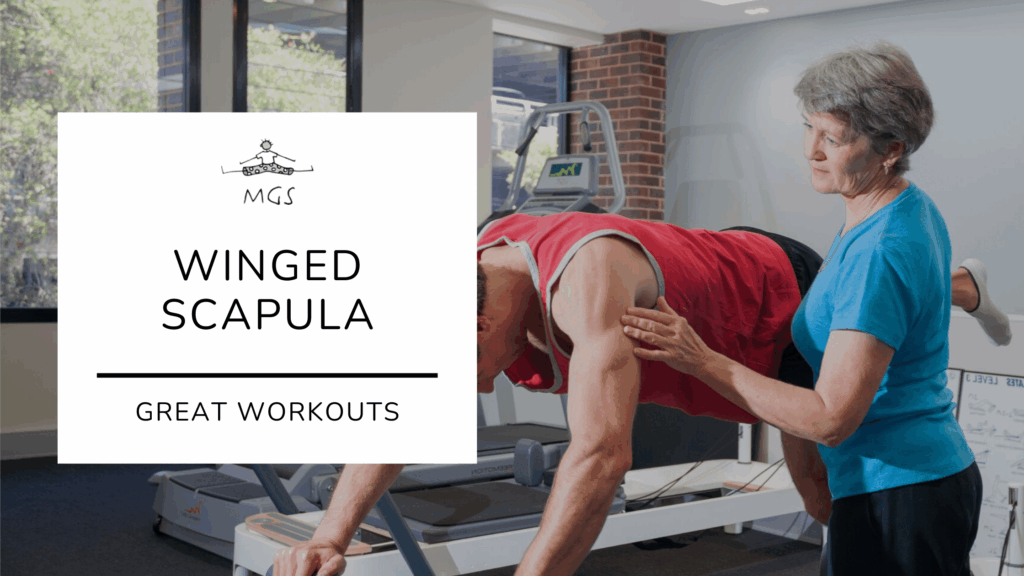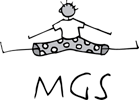If you’ve noticed your shoulder blade sticking out awkwardly when you move, you might be dealing with a condition called a winged scapula. It can look unusual, feel uncomfortable, and make everyday tasks like reaching, lifting, or carrying feel harder than they should. Winging of the scapula affects both the function and stability of the shoulders, often leading to movement limitations and pain.
The good news? With the right exercises and a tailored physical therapy plan, you can strengthen your shoulder muscles, improve posture, restore smooth movement, and return to daily life with confidence , provided there has not been permanent damage to the nerves that supply the stabilising muscles .
Key Takeaways
- A winged scapula occurs when the scapula (shoulder blade) protrudes, often due to muscle weakness or nerve injury like long thoracic nerve palsy, spinal accessory nerve damage, or dorsal scapular nerve injury.
- Targeted physical therapy exercises strengthen the serratus anterior muscle, trapezius muscles, and rhomboid muscles – key stabilising muscles of the shoulder girdle.
- Types include medial scapular winging (from serratus anterior palsy) and lateral winging (from trapezius or rhomboid palsy).
- Tests such as the scapular retraction test and scapular assistance test help identify the cause.
- While most cases improve with physiotherapy, severe nerve injury may require surgical intervention, such as pectoralis major transfer or a sural nerve graft.
What is a Winged Scapula?
A winged scapula describes when the scapula no longer lies flat against the rib cage and chest wall. Instead, the medial border or inferior angle of the affected scapula sticks out.
There are two main types:
- Medial winging – caused by weakness or paralysis of the serratus anterior due to long thoracic nerve palsy.
- Lateral winging – caused by weakness in the trapezius muscles (from spinal accessory nerve damage) or rhomboid palsy (from dorsal scapular nerve injury).
When the stabilising muscles fail, the shoulder blade loses its smooth motion, affecting the glenohumeral joint, rotator cuff, and overall shoulder function.
Causes of Scapular Winging
Several factors can contribute:
- Nerve injury – Trauma, neck surgery, thoracic surgery, or brachial neuritis can damage the long thoracic nerve, spinal accessory nerve, or dorsal scapular nerve.
- Repetitive stretch injury – Common in repetitive throwing, overhead arm activity, or constant repetitive movements.
- Traumatic injuries – Direct blows, falls, or sudden force leading to muscle weakness or paralysis.
- Post-surgical effects – Procedures in the posterior triangle or related to cervical radiculopathy may impact nerve pathways.
- Underlying shoulder issues – Problems with the levator scapulae, rotator cuff, or glenohumeral joint can also contribute.
Symptoms of Winged Scapula
People with this condition often report:
- A visibly affected shoulder blade protrudes from the back.
- Reduced shoulder strength and shoulder range, especially in arm movements.
- Pain with scapular protraction, scapular retraction, or overhead arm activity.
- Difficulty with simple actions like pushing off a chair, performing a push-up position, or lifting overhead.
- Postural changes, such as a head tilted to the side or sudden lateral flexion to compensate.
- Fatigue and dysfunction in the upper limb and upper extremity.
If untreated, abnormal movement patterns – known as scapular dyskinesis – can develop, causing long-term issues with shoulder motion and overall stability.
Scapular Dyskinesis and Shoulder Instability
Scapular dyskinesis means the shoulder blade doesn’t glide properly along the rib cage. It’s often linked with scapula winging, since both conditions come from weakness or imbalance in the stabilising muscles. Poor posture, repetitive movements, and traumatic injuries can all disrupt normal motion.
This abnormal rhythm puts extra strain on the rotator cuff and glenohumeral joint, sometimes leading to shoulder instability or nerve irritation. If you’re dealing with these issues, a tailored sports physiotherapy program can help restore control and strength.
Best Physical Therapy Exercises for Winged Scapula
The goal is to reactivate the serratus anterior, trapezius, and rhomboids while retraining smooth scapular control.
1. Wall Push-Up Plus
Strengthens the serratus anterior muscle. Add an extra forward push at the top for maximum activation.
2. Scapular Squeeze
Pull the medial scapula into a retracted position, holding for 5 seconds. Builds the rhomboid major, rhomboid minor, and middle trapezius muscles.
3. Serratus Wall Slides
Lean the affected scapula against the wall and slide upwards, keeping control of the inferior pole. Great for scapular protraction strength.
4. Resistance Band Rows
Row towards the chest, squeezing the scapula together. Builds the shoulder girdle and helps correct shoulder instability.
5. Prone Y and T Raises
Lying face down, lift into Y and T shapes, engaging the spinous processes, scapula, and lower trapezius.
6. Dynamic Hug
Using a resistance band, press forward as if hugging. Excellent for retraining the serratus anterior.
7. Scapular Push-Ups
From a push-up position, move only the scapula in and out. Targets the serratus anterior paralysis recovery and improves pain-free movement.
These should ideally be introduced under the supervision of a physiotherapist to ensure correct technique and safe progressions.
Assessments and Tests
To confirm scapular winging, physiotherapists may use:
- Scapular retraction test – assesses rhomboid and trapezius function.
- Scapular assistance test – checks whether manual support of upward rotation reduces symptoms.
- Magnetic resonance imaging (MRI) – investigates deeper nerve injury, thoracic surgery damage, or other causes.
Early assessment at a Northern Beaches physio clinic can speed up recovery and prevent long-term issues.
Managing Traumatic Injuries
Blunt trauma or sudden lateral flexion of the neck can injure the nerves stabilising the scapula. If weakness or paralysis follows, recovery may require:
- Physical therapy exercises to retrain movement and improve shoulder motion.
- Pain management strategies to reduce discomfort.
- In severe cases, surgical intervention such as a sural nerve graft or pectoralis major transfer may be needed.
If pain is a barrier, targeted strategies like pain relief management can support your recovery alongside exercise.
Prevention and Recovery
- Strengthen stabilising muscles: Focus on the serratus anterior, trapezius, and rhomboids.
- Stretch tight muscles: Especially the pectoralis major and levator scapulae.
- Avoid repetitive throwing or repetitive stretch injury until cleared by a physical therapist.
- Maintain posture: Keeping the scapula aligned against the rib cage supports the shoulder girdle.
- Gradual loading: Build shoulder strength slowly to avoid setbacks.
When Surgery May Be Needed
Most people improve with physio, but in rare severe cases – such as permanent long thoracic nerve palsy, serratus anterior palsy, or rhomboid palsy – surgery may be considered.
Options include:
- Pectoralis major transfer – using the chest muscle to substitute for a paralysed serratus anterior.
- Sural nerve graft – repairing nerve damage when paralysis is long-standing.
- Other surgical treatment if rehabilitation alone isn’t enough.
Final Thoughts
A winged scapula can feel limiting, but it doesn’t need to hold you back. With the right physical therapy exercises, guided care from a physiotherapist, and patience, most people regain pain-free movement and full shoulder function.
At MGS Physiotherapy, our team provides one-on-one treatment to restore your shoulder strength and stabilise the affected scapula. Whether your scapular winging is caused by nerve injury, traumatic injuries, or muscle weakness, we’ll design a program that gets you back on track.
Call now to book your sports physio appointment with MGS Physiotherapy.
CALL NOW TO BOOK YOUR APPOINTMENT

